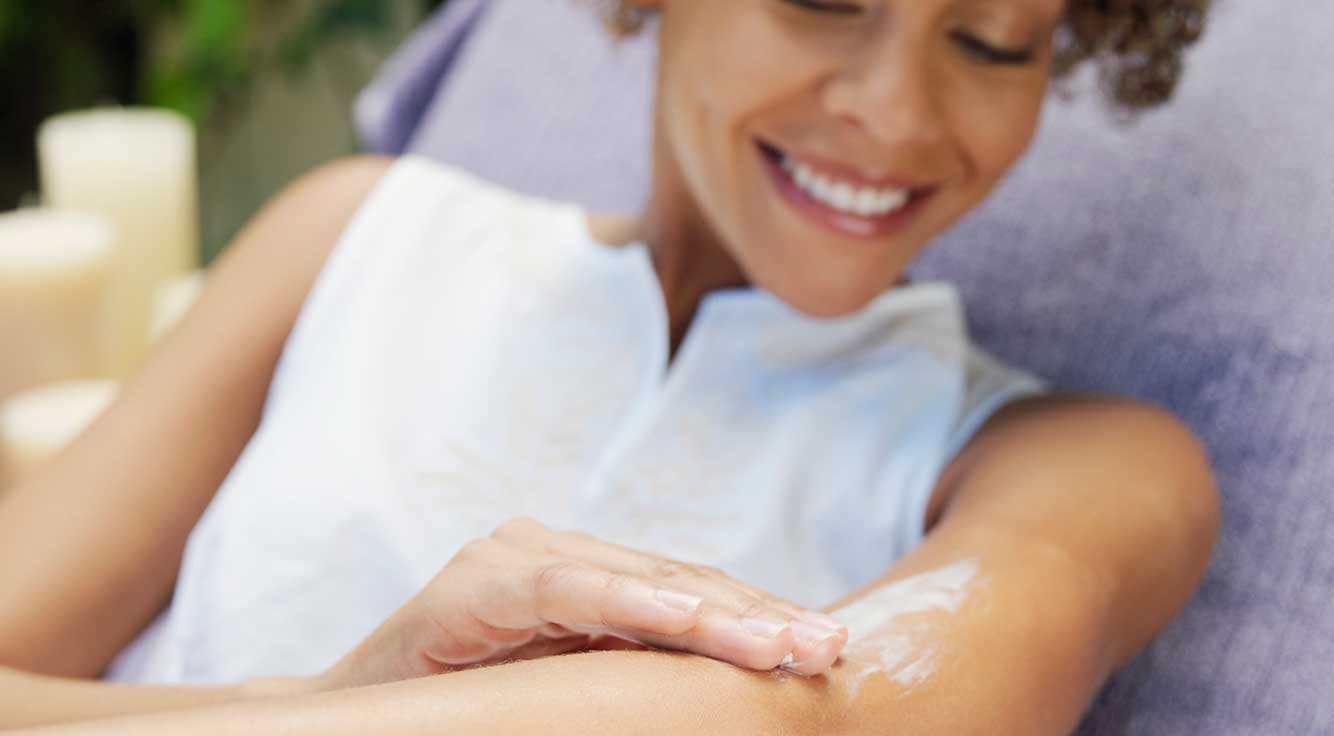
Is sunless tanning safe? Here’s what you need to know.
It’s widely reported that famous French fashion designer Coco Chanel made tanning popular — completely by mistake. In the early 1920s, Chanel got sunburned while spending time on a yacht in the French Riviera. Her sunburn faded into a tan and Chanel’s new “look” became all the rage. Afterwards, having tanned skin was associated with a life of wealth, leisure, and travel.
While tanning is still popular today, we now know that it comes with certain health risks. If you spend time out in the sun unprotected, you’re putting yourself at risk for developing sunburns, skin damage, premature aging, and skin cancer.
The good news is you can still get a tan without extended sun exposure. There are many sunless tanning options to consider — some good, some bad. So, we asked our chief of dermatology for Kaiser Permanente in sunny San Diego, Jeff Benabio, MD, MBA, about tanning options — including which are safe and which to avoid. Here’s what he had to say.
Avoid: Tanning beds and booths
“Using tanning beds significantly increases your risk of skin cancer,” says Dr. Benabio. “I urge everyone to avoid them.”
Many studies have shown the dangers of using tanning beds and booths. The American Academy of Dermatology reports:1
- Nearly 400,000 cases of skin cancer in the U.S. each year may be attributed to indoor tanning.
- If you’re using a tanning bed before age 35, you can increase your risk of melanoma by 59% — which increases with every use.
- Even just one tanning bed or booth session can increase your risk of developing squamous cell carcinoma by 67%, basal cell carcinoma by 29%, and melanoma by 20%.
Avoid: Sunless tanning pills and accelerators
Tanning pills are taken orally and distribute color additives throughout your body — especially the skin. According to the American Cancer Society, “The main ingredient in most sunless tanning pills can show up in your eyes as yellow crystals, which may cause injury and impair vision. There have also been reports of liver and skin problems.”
As for tanning accelerators, they can be found in both pill and lotion form and are said to stimulate your body’s tanning process. However, there’s no evidence that they work — and they may even be dangerous.2
“Two ingredients found in sunless tanning products less frequently are the color additive canthaxanthin, which is used in sunless tanning pills, and the amino acid tyrosine, which is used in tanning accelerators,” Dr. Benabio explains. “These ingredients have not been approved by the FDA as tanning agents and should be avoided.”
Try: FDA-approved sunless tanning lotions and creams
If you’re looking to get a summer glow, try sunless tanning lotions and creams that contain ingredients approved by the Food and Drug Administration (FDA).
“These options are safe and harmless,” says Dr. Benabio. “I often hear from patients who are fair-skinned that they want a little more color. I tell them that using sunless tanning products can help them get a tan without spending time in the sun. This limits their exposure to harmful ultraviolet (UV) radiation, which accelerates the skin’s aging process and increases the risk for skin cancer.”
Unlike self-tanning accelerator lotions that use tyrosine, FDA-approved sunless lotions and creams use an active ingredient called dihydroxyacetone (DHA). “DHA works by reacting with dead cells on the skin’s surface to temporarily darken the skin. But keep in mind that DHA is only approved for external use, so avoid getting the product in your eyes, ears, or mouth.”
Try: Airbrush tans or tanning sprays
You may also want to consider professional airbrush tanning or tanning sprays. Like the lotions and creams, these products work by temporarily darkening your skin to make you look suntanned. However, when using these products take special precautions to avoid inhaling the mist or spray.
A word of caution
A recent study in JAMA Dermatology found that people who use sunless tanners may engage in risky sun-protection behaviors.3 If you do decide to use a safe self-tanning lotion, cream, or spray, remember these products don’t provide protection from the sun. Here’s what Dr. Benabio recommends for protection:
- Avoid the sun when possible — especially between 10 a.m. and 4 p.m.
- Try to stay in the shade if you need to be outside.
- Wear protective gear like a wide-brimmed hat, sunglasses, and clothing that covers your arms and legs.
- Apply sunscreen with a sun protection factor (SPF) of at least 30 and reapply it every 2 hours.
For more information on sun safety, visit our online health encyclopedia.
Bottom line: If you want a tan, you can avoid putting your health at risk by using an FDA-approved sunless tanning lotion, spray, or cream. Whichever product you decide to use, be sure to use it as directed. And you’ll also need to continue wearing proper sun protection when spending time outside.
1Indoor tanning, American Academy of Dermatology, accessed May 2019.
2“Tanning Pills and Other Tanning Products”, American Cancer Society, April 19, 2017.
3Melissa Dodds, MD, et al., “Characteristics and Skin Cancer Risk Behaviors of Adult Sunless Tanners in the United States,” JAMA Dermatology, September 2018.





